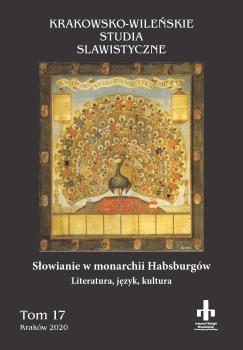Zeszyt węgierski. Testimoniów najdawniejszych dziejów Słowian, czyli Słowianie w oczach Węgrów .......... 99
Synopsis
THE HUNGARIAN VOLUME OF THE TESTIMONIES OF THE OLDEST HISTORY OF THE SLAVS OR THE SLAVS IN THE HUNGARIAN EYES
The Habsburg Monarchy was a homeland for many Slavic people. Hungary was the main centre – apart of the incorporated territories of Poland – of the Slavs in the Monarchy. The Hungarian Monarchy included present-day Slovakia and Croatia as well as other territories inhabited by the Slavs. Therefore, Hungary should not be excluded from any reflection on the Slavic history despite the fact that the Finno-Ugric Hungarians are not the Slavs and do not feel as a part of the Slavic world. The Hungarian sources should be included in the series: Testimonies of the Oldest History of the Slavs, which is preparing since 40 years in the Unit for History of the Institute of Slavic Studies, Polish Academy of Sciences. The series was connected to the works on the Lexicon of the Slavic Antiquities and collected the source basis of the Lexicon’s articles. Two language series were prepared according to the language of the source texts: the Greek and the Latin. The volume containing the excerpts of the Hungarian narrative sources with the information about the Slavic people belongs to the Latin series. I concentrated on the text of the first preserved Hungarian chronicle, Gesta Hungarorum written by an anonymous notary of King Béla (supposedly III). The chronicler described the conquest of the land by the Hungarians in constant conflict with the Slavic inhabitants, first of all in Rus’, then in the Carpathian Basin. The term ‘the Slavs’ denoted probably a defined population inhabited in Pannonia close in vicinity of the Wallachians and the Bulgars, whose we define as the Slavs today. It supports the observation that the ethnography and not the philology was the main criterion of the definition of peoples in the Antic Time and the Middle Ages. We would like to compare the changes of the Slavic image in the eyes of Hungarian elites in the course of time.





